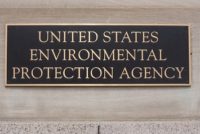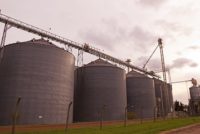More and more states are legalizing traditionally illegal substances such as marijuana, and legal substances such as alcohol or prescription medication still have a high potential for abuse. It’s a special concern for environment, health, and safety professionals, as on-the-job use or abuse of any drug can potentially have devastating, even life-threatening consequences. However, safety […]
Safety data sheets (SDSs) for several bulk flavorings failed to list hazardous substances, according to National Institute for Occupational Safety and Health (NIOSH) findings. Out of 26 bulk liquid flavorings obtained from two U.S. coffee roasting and packaging facilities, 21 contained diacetyl, and 15 contained 2,3-pentanedione.
April is Distracted Driving Awareness Month, and the National Safety Council (NSC) and the Emergency Responder Safety Institute (ERSI) have found that far too many passing drivers are taking photos or videos and posting to social media when emergency personnel are responding to an incident.
At the beginning of a video released by the National Institute for Occupational Safety and Health (NIOSH), a police officer is exposed to fentanyl and experiences symptoms of an overdose. The video serves to highlight the risks to first responders who may be exposed to fentanyl on the job, along with recommendations to stay safe […]
Workplace violence can happen to any worker in any industry. The Occupational Safety and Health Review Commission (OSHRC) recently reaffirmed that violence in the workplace is a recognizable hazard, and employers are responsible for protecting employees from assaults and homicides.
In a congressional hearing, a lineup of advocates for worker safety faulted the way the EPA is using its new authority under the 2016 amendments to the Toxic Substances Control Act (TSCA) to shield workers from the occupational exposure to hazardous chemicals.
Grain engulfment is one of the most serious, sometimes fatal, safety and health hazards in the agriculture and grain and feed processing industries. OSHA and its industry partners are sponsoring a “Stand-Up for Grain Safety Week,” March 25–29, to alert workers to grain handling hazards.
OSHA uses the General Duty Clause of the Occupational Safety and Health Act (OSH Act) as a “gotcha” or “catchall” for hazards with no established standards, the members of a federal review board recently said.
The U.S. Chemical and Safety Hazard Investigation Board (CSB) recently released a Safety Spotlight recommending that employers closely apply industry consensus standards to safeguard employee and public safety. Titled “The Importance of Industry Safety Guidelines, Codes, and Standards,” the report highlights the CSB’s role in accident investigation and focuses on several safety codes and standards […]
The single greatest hazard to your employees may be largely outside your control. It’s not hazardous machinery, working at heights, or dangerous chemicals. It’s driving.










